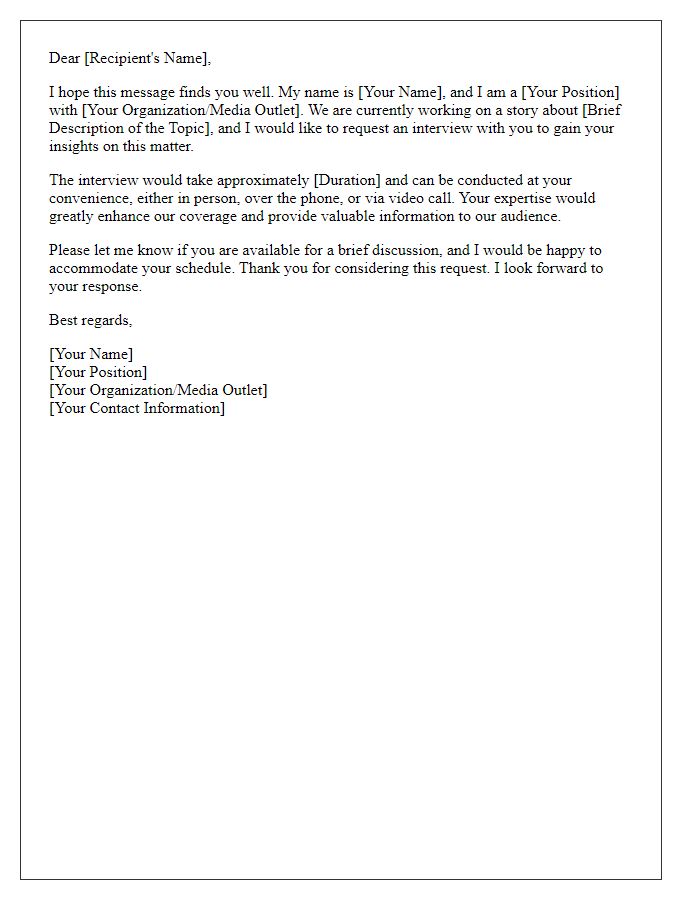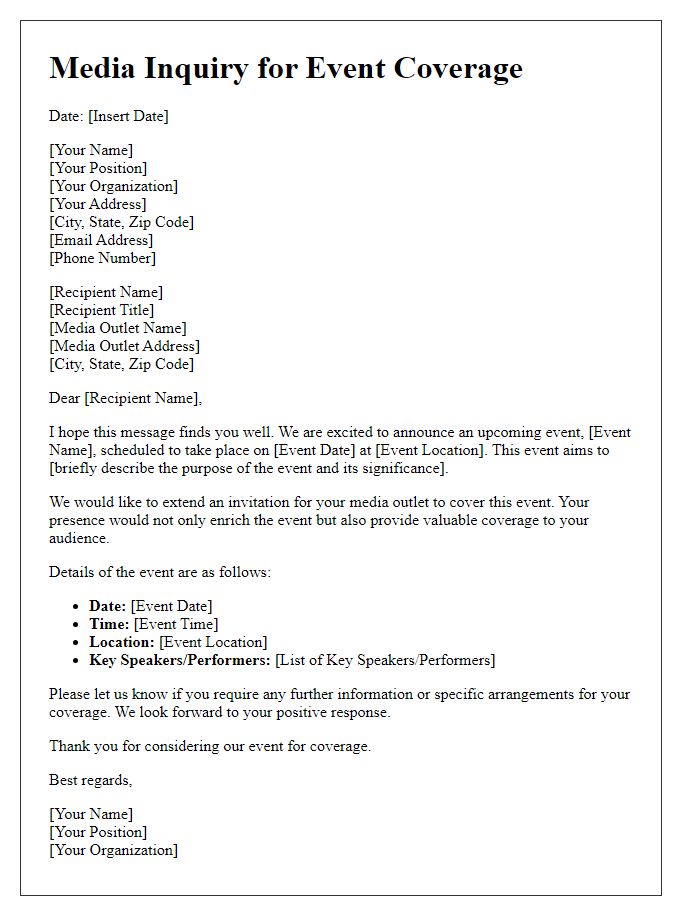Are you looking to craft the perfect media inquiry letter? Whether you're reaching out to journalists, bloggers, or influencers, a well-structured introduction can make all the difference. This article will guide you through the essential elements to include, ensuring your message stands out in a crowded inbox. Curious to learn more about creating a compelling media inquiry? Read on!

Clear Subject Line
A clear subject line can significantly enhance media inquiries by providing direct insights into the content, such as "Inquiry Regarding Upcoming Sustainability Event - [Event Name]". This subject line immediately informs the recipient about the focus of the email, allowing journalists or public relations personnel to prioritize their responses. Important elements including the event name, date, and context can enhance clarity and urgency. Utilizing specific keywords such as "inquiry" highlights the intention of the communication, facilitating a strong first impression. Effective subject lines can increase the chance of engagement and prompt timely follow-ups, benefiting both the sender and recipient.
Professional Greeting
Media inquiries often require a clear and professional introduction to establish credibility and context. For instance, organizations seeking to connect with journalists may begin with a courteous greeting, addressing the recipient by name, followed by a brief introduction of the organization, emphasizing its purpose, such as providing newsworthy insights or expert commentary on specific topics like technology trends or public health events. This opening sets the tone for a constructive dialogue, as it highlights the value of the information being shared.
Concise Introduction
Media inquiries often require a concise introduction to establish context and engage the interest of reporters. An efficient introduction outlines the purpose of the inquiry while conveying the significance of the topic. Important elements such as the key issue at hand, relevant statistics, or notable upcoming events should be highlighted to provide a foundation for further discussion. Establishing credibility and relevance at the outset ensures the inquiry captures the attention of the media, leading to a meaningful connection that encourages timely coverage.
Purpose of Inquiry
The media inquiry aims to gather insights on recent developments in renewable energy technologies, focusing specifically on advancements in solar panel efficiency and battery storage capacities. Recent studies indicate that the efficiency of photovoltaic cells has increased to over 22%, significantly enhancing energy conversion rates. Experts from reputable institutions such as Stanford University and the Massachusetts Institute of Technology are leading these research initiatives. The goal is to understand how these innovations will impact energy policy and sustainability efforts globally, particularly in areas facing energy crises such as Sub-Saharan Africa and parts of Southeast Asia.
Contact Information
Contact information serves as a critical tool for facilitating communication between organizations and the media. Typically, it includes the name of a dedicated public relations officer or spokesperson, their email address, phone number, and sometimes social media handles. These details allow journalists to reach out for interviews, statements, or further information regarding ongoing events or announcements. Furthermore, ensuring the accuracy of this information is vital, as incorrect or outdated contact details can result in missed opportunities for coverage or misunderstandings about important issues. Successful media inquiries often hinge on clear and accessible contact information, ensuring swift and effective communication.













Comments